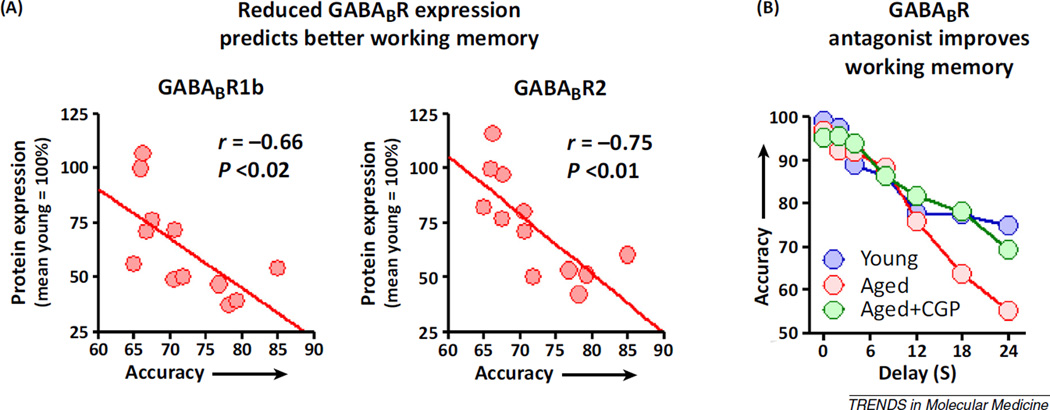Figure 4.
Targeting GABABR signaling to improve working memory. (A) Likely in response to excess GABABR-mediated inhibition, expression of the subunits that together form postsynaptic GABABRs (GABABR1b and GABABR2) is reduced in the aged medial prefrontal cortex (mPFC) [11,14]. The downregulation of postsynaptic GABABRs receptor might serve to compensate for the excess inhibition described above as well as help to preserve the persistent activity of pyramidal neurons that is required for working memory maintenance. In support of this hypothesis, the bottom-right panel shows that, among aged rats, lower GABABR1b and GABABR2 expression strongly predicts better working memory. (B) If the downregulation of GABABRs is a crucial mechanism for preserved working memory in aging, then blockade of GABABR signaling should restore working memory in impaired aged subjects. The line graph shows performance of a cohort of aged rats (red circles) that are impaired relative to young adult rats (blue circles) on the delayed-response task. Using a within-subjects design, in which the same aged subjects shown in red were administered a GABABR antagonist CGP55845 (CGP) directly into the PFC (green circles), aged rat performance is restored to that of young adults. Data reproduced from [14].

